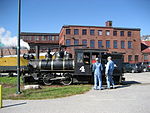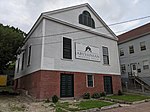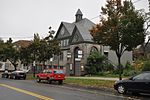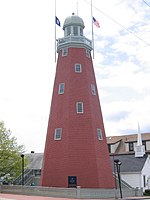Portland Company Marine Complex
1846 establishments in MaineFoundries in the United StatesIndustrial buildings and structures in Portland, MaineIndustrial buildings completed in 1846Maine building and structure stubs
The Portland Company Marine Complex is an 9 acres (3.6 ha) industrial site in Portland, Maine's East End neighborhood. The Portland Company was established in 1846 and built railroad equipment for the adjacent Portland terminus of the Atlantic and St. Lawrence Railroad connection between Portland and Montreal. It ceased production in 1978. In August 2013, the property was sold to a group of developers. At the time of its sale, the property had a tax-assessed value of $1.9 million. Since 1993, the building has been home to the Maine Narrow Gauge Railroad Museum as well as host to the annual events Maine Boat Show and Maine Flower Show.
Excerpt from the Wikipedia article Portland Company Marine Complex (License: CC BY-SA 3.0, Authors).Portland Company Marine Complex
Fore Street, Portland
Geographical coordinates (GPS) Address Nearby Places Show on map
Geographical coordinates (GPS)
| Latitude | Longitude |
|---|---|
| N 43.66289 ° | E -70.2438 ° |
Address
Maine Narrow Gauge Railroad Museum
Fore Street
04101 Portland
Maine, United States
Open on Google Maps







